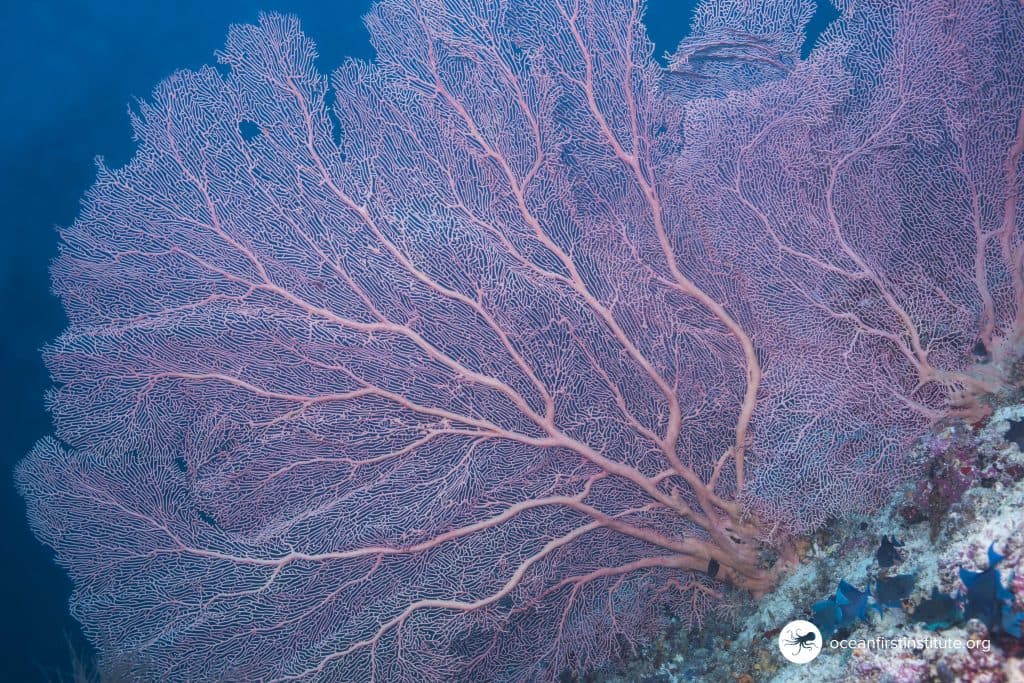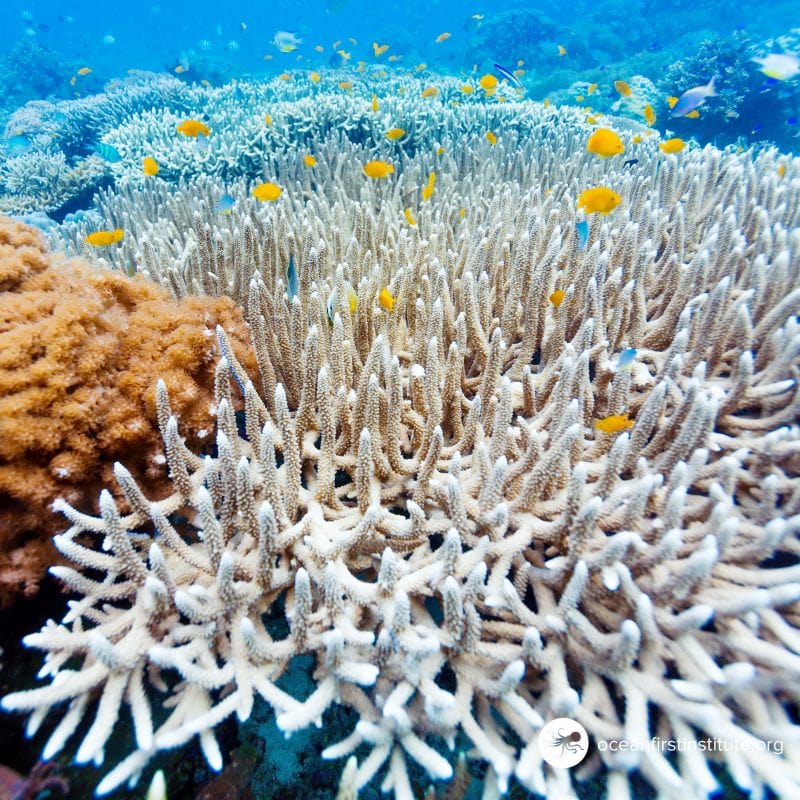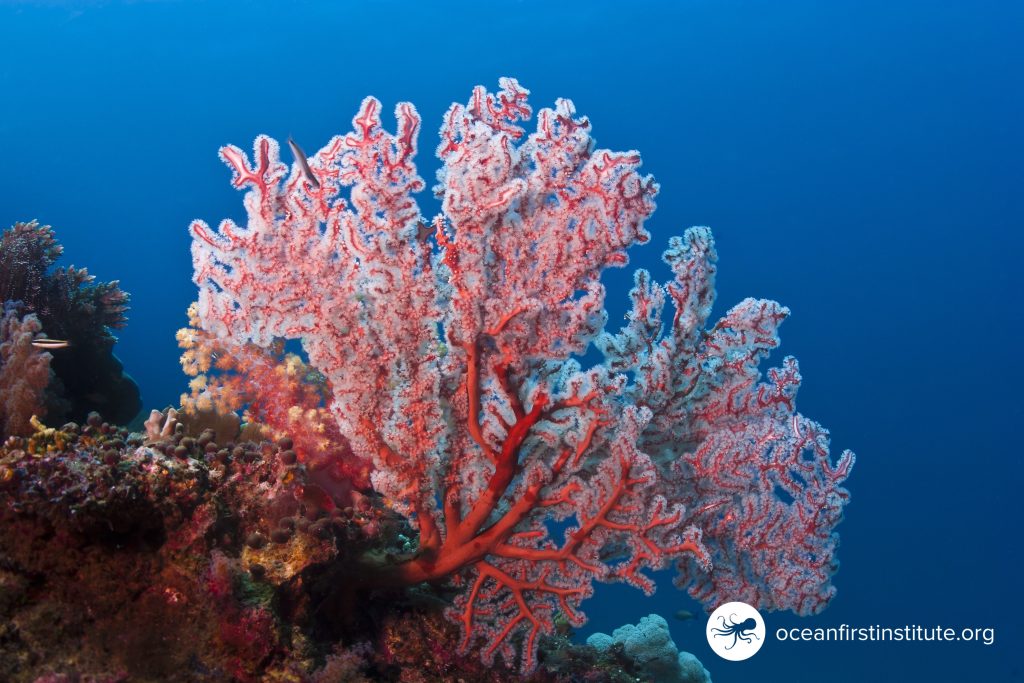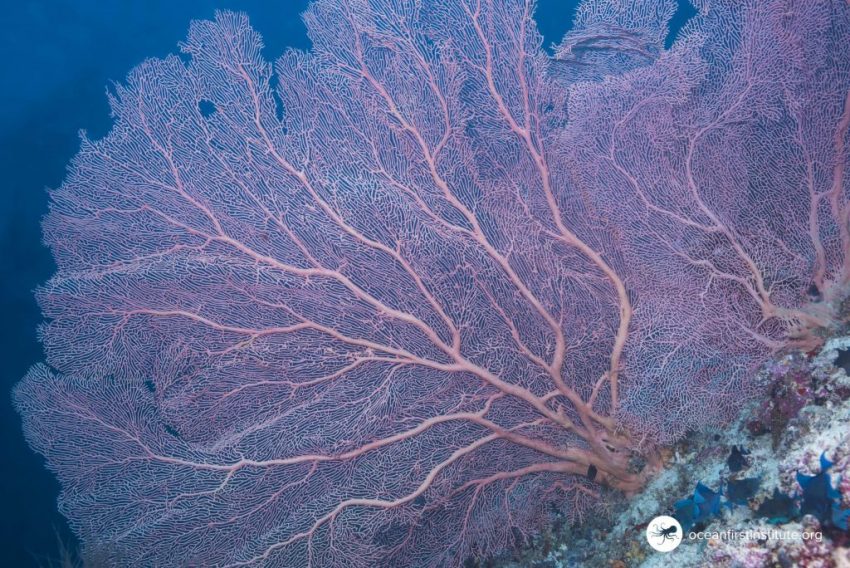A collaborative post by Ocean First Institute Communication and Outreach Intern, Kaela Loriz, and student volunteer, Anna Alfermann.
“It is the worst of times but it is the best of times because we still have a chance.” – Sylvia Earle
 Gorgonian Sea Fan. Photo Credit: Ocean First Institute.
Gorgonian Sea Fan. Photo Credit: Ocean First Institute.
Profile:
Phylum: Cnidaria
Class: Anthozoa
Habitat: Tropical and Subtropical waters
Food: Floating zooplankton and detritus
Bonus Energy Source: Symbiotic relationship with coral-dwelling, photosynthetic algae produces energy
Threats: Increasing water temperatures due to global warming, ocean acidification due to increasing levels of carbon dioxide, pollution
Recent research has revealed the dire state of our planet’s coral reefs. Coral bleaching and reef death are occurring at an unprecedented rate. That being said, do we give up just because things look bleak? No! It inspires new minds and bodies to take action and do their part to learn about and protect these precious species and ecosystems.

Bleached coral. Photo Credit: Ocean First Institute.
Reef – Algal Relationships:
Algae live within coral, giving the colonies their vibrant colors. These algae are not just for show, though. The coral colony provides carbon dioxide and shelter to algae, which – through photosynthesis – supports itself and supplements coral polyp metabolism.
Reef Importance:
For those of us living hundreds of miles from the tropics, it can be easy to forget about coral reefs, but they are crucial to our ocean’s – and planet’s – health. Here is some food for thought:
- 25% of all marine life calls reef ecosystems home
- Up to 2 million species depend on reefs for survival
- Reefs provide shelter from predators and waves
- They provide food and help recycle nutrients within marine food chains
Understanding Coral Bleaching:
Coral, much like humans, has a physical response to stress, most frequently related to rising ocean temperatures. As a result, coral can bleach or fluoresce. It’s important to note, though, that bleached coral is not dead coral.

Bleaching Diagram Courtesy of Ningaloo-Atlas.
As the diagram above indicates, the outcomes of bleaching processes are dictated by water temperature. If temperatures remain high or continue to rise, coral death becomes more likely. If, however, temperatures decline, the colony’s chances for survival rise.
 Photo Credit: Ocean First Institute.
Photo Credit: Ocean First Institute.
Ways You Can Help!
- Reduce your water use:
- Reducing water use reduces runoff that endangers coral populations!
- 5 ways to decrease harmful runoff:
- Use eco-friendly lawn and garden products, and do so sparingly.
- Collect rainwater in barrels or rain gardens. You’ll conserve water and quench your garden!
- Clean up after your pets. Animal waste and coral do not get along.
- DO NOT put harmful chemicals (antifreeze, oil, paint, etc.) into storm drains or waterways. That’s what the landfill is for.
- Put your lawn clippings in the compost pile.
- Reduce, reuse, recycle, refuse, and rot (compost)!
- Try coral friendly sunscreen
- Support coral restoration projects:
- Visit The Coral Restoration Foundation to learn more or get involved!
 Branching Coral. Photo Credit: Ocean First Institute.
Branching Coral. Photo Credit: Ocean First Institute.
Above all, remember that you have the power to improve the health of our ocean!

